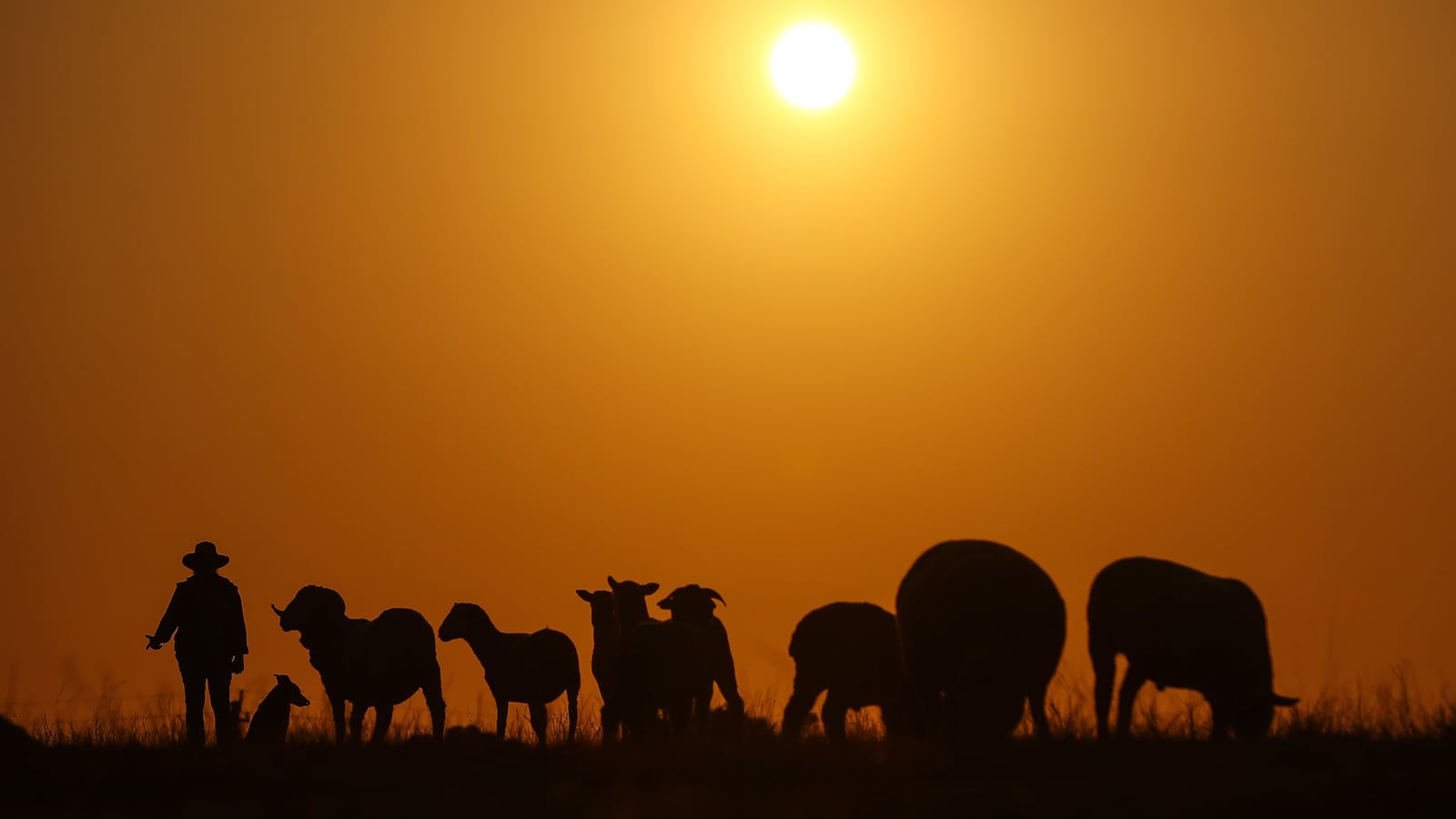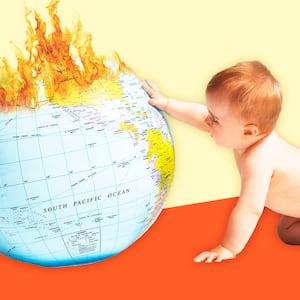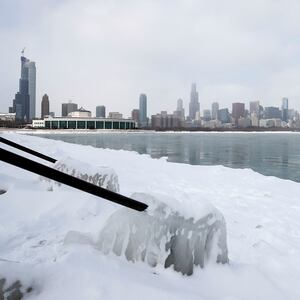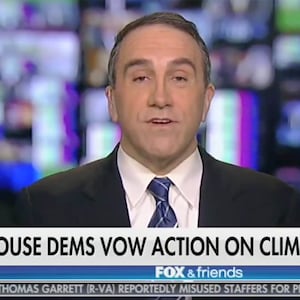Late last year, looking for something new to listen to while doing chores around the apartment, I dove deep into podcasts and resurfaced in southern Australia, where the world is ending.
This was at the end of December, during a warm weekend in New York City. The high in Central Park that Saturday was 13 degrees above the historical average. In Bellata, a small village in the interior of New South Wales, a violent windstorm blew the roof off the home of a sorghum farmer. A horse owner elsewhere in the state said her hay shed had been “absolutely buckled to smithereens.” The sorghum farmer was unbothered. “At least we got a good rain,” he said.
That was my introduction to the New South Wales Country Hour.
The program’s host, Michael Condon, had opened with a rundown of the day’s weather disasters: “Dairy production in Australia said to fall to levels not seen in more than 20 years, and cyclonic winds and hail the size of tennis balls batters farms up and down the state,” he said, in his BBC-style deadpan.
Three days later, when I checked in on the podcast again—it’s thumbnail image is a herd of sheep, and it opened with ewes bleating and a cow mooing over what sounded like a MIDI version of the Morning Edition riff—Condon was reporting on the hail smashing cherry farms, and a toxic blue green algae bloom on a stretch of the Darling River.
That Thursday, the program’s weather correspondent forecast sustained temperatures of 104 degrees over the following week.
The next Monday, December 31, dust storms ruined New Years Eve.
“It’s a hideous dark red,” New South Wales Country Hour correspondent Sally Bryant told Condon on the January 2 program, describing images of the dust storms that forced the cancellation of New Years Eve fireworks in Dubbo. “Marquees were going hell west and crooked in the wind. It was savage weather. It was horrible. It was almost as thought it was a last sucker punch from 2018.”
Weather conditions have remained horrendous in New South Wales for well over a year. The region is suffering through one of its worst droughts on record, and just finished its hottest summer ever. The New South Wales Country Hour is on the front lines of this rolling catastrophe, playing out in farms, dairies, and feedlots spread across a territory twice the size of California. It makes for riveting radio.
I listened to the New South Wales Country Hour on and off for a couple of months while walking down New York City sidewalks, up subway stairs, and riding office building elevators. The show has recently updated its theme music, and retired the cows and the ewes. But while the segments about competitive plowing and the difficulties inherent in playing cricket in the bush (“watch out for the odd sheep carcass”) are, perhaps, difficult to relate to, this radio show for Australian farmers is essential listening for people who want to understand what happens when the ecological balance starts to tip.
On the April 4 program, on a dairy farm in Deniliquin, an agricultural town in New South Wales, a New South Wales Country Hour correspondent named Cara Jeffrey interviewed Kathleen Johnston, who was selling her herd of 140 cows.
“It’s depressing and upsetting and I’m not going to handle it real well,” Johnston said, beginning to cry.
The Johnstons had been dairy-farming in Deniliquin for a decade. But the drought had raised the prices of grain and wheat, and doubled the price of hay, they said. Their water costs were set to triple for the year, and their cows were producing less milk. Their dairy farm was one of the last in Denilquin, which used to have dozens.
“We got through last year by the skin of our teeth,” David Johnston, Kathleen’s husband, told Jeffrey. “But there’s nothing left in the kitty to get through this year. And it’s looking to be another dry year.”
The cows were going to a farm in Victoria. The Johnstons didn’t know what they were going to do with their land.
Produced in Sydney by the publicly-funded Australian Broadcasting Corporation, the New South Wales Country Hour is one of seven local editions of the daily program, each with its own host. Condon, who has worked as a broadcaster at ABC since 1993, took over the host’s chair at the New South Wales edition of the program in 2010. The show focuses on farming and agriculture, and has always spent a lot of time on the weather.
“Rain, not enough rain, too hot too cold too windy,” Condon wrote in an email. “Anything that makes an impact on farm production.”
But Condon says that over the past few years, the weather has become an almost single-minded focus. “With the drought and the number of powerful storms we are seeing we have been almost obsessed with the weather,” Condon said.
As I listened to the farming news from New South Wales a few times a week, everything began to feel a bit more precarious.
Take the fish kills. On January 30, Condon’s fill-in that day, Kim Honan, opened with a segment on the discovery of hundreds of dead fish the day before in the Murrumbidgee River in southwest New South Wales. They were carp and perch and bony bream, mostly. Australia’s minister for regional water at the time, Niall Blair, told one of the program’s reporters that the die-off was a “relatively minor event,” relative to recent fish die-offs in the lower Darling River, a few hundred kilometers north.
I hadn’t heard of the Darling River fish kills. They’re horrifying. In three separate incidents in 2018 and 2019, up to a million fish perished en masse in a stretch of the lower Darling. Photographs of the incidents show ponds where the surface is blanketed by fish carcasses. It looks apocalyptic.
These fish kills happened after the drought turned the Darling into a series of lakes, and those lakes gradually shrunk, causing the water quality to deteriorate. Climate change has, at the very least, amplified the conditions that led to the die-offs, according to an independent report commissioned by the Australian government.
Weather, of course, is a complex phenomenon. The relationship between global climate change and the extreme weather that’s slammed New South Wales over the past year is complicated, though experts say that climate change is exacerbating the impact of the drought.
“The primary issue is it’s not raining,” said Andy Pitman, an atmospheric scientist who directs the Centre of Excellence for Climate Extremes at the University of New South Wales. Though droughts are part of the natural cycle in New South Wales, this one doesn’t fit the classic model, and experts don’t understand why it’s happening.
What the experts do know is that this drought has been worse than previous bad droughts because it’s also extraordinarily hot. Pitman said that there are towns in inland New South Wales where the temperature was over 104 degrees Fahrenheit for more than a month in 2018.
“The fundamental difference between this drought and other previous droughts is it’s hotter,” Pitman said. “And we know why it’s hotter. It’s because humans keep emitting greenhouse gasses into the atmosphere.”
It’s likely that the drought is a natural phenomenon. Its intensity, however, is almost certainly due to climate change. “There’s no way to economically survive this kind of an event, if it continues for long enough,” Pitman said.
On the New South Wales Country Hour, there’s a motif of well-established farming operations finding their business suddenly threatened by the drought. On May 6, the show featured an interview with Mal McMaster, a farmer in Coolah, whose property has been in his family over a century.
“We would consider ourselves to be a very safe area,” McMaster said. “We’ve only missed out on a winter crop once. That was last year. And we’ve only ever missed out on a summer crop twice, and one of those was last year, as well.”
And then there was the April 3 interview with the chairman of Rabobank, a Dutch bank that lends to many Australian farmers, who told Condon that, while his clients weren’t drastically changing their operations as a result of the drought, it could still happen.
“We don’t see a structural shift yet, but it could be that some farmers that have been operating on a marginal basis ahead of this drought are now needing to make this shift,” said the banker, Wiebe Draijer.
“This is how it will look in the future,” Pitman told me. “Places you thought were safe will become insecure. Other places that are already insecure will become more so, and it’s rather down to blind luck as to whether you happen to have your job or your family or your property in a place that becomes extremely vulnerable, or whether you serendipitously happen to be living somewhere that withstands it. But ultimately all of those places which are hammered by climate change will add up and feed through the system and start to directly impact everybody.”
He paused. “Sorry. It’s not a good news story.”
The situation in New South Wales remains grim. The Australian government’s monthly report on climatic conditions in the state for April said that it had been the fifth-hottest April on record in New South Wales, and that a number of towns had recorded record-breaking temperatures. Rainfall, meanwhile, was 58 percent below average. Farmers’ mental health is a growing concern. In September, the program reported that the suicide rate in Australia was up 10 percent, an increase one expert linked to the drought.
“Farmers are like the canary in the coal mine,” Condon wrote in an email.
On the other side of the world, where I live, we have extreme weather, too. Just seven years ago, the neighborhood next to mine was submerged, my office was uninhabitable for months, and 43 million gallons of saltwater flooded the Brooklyn-Battery Tunnel. But today, as Hurricane Sandy fades into the murky half-forgotten recent past, the urban strongholds of the East Coast of the United States can feel impenetrable, and the catastrophes a few states away are just blips on our Twitter feeds.
The updates Condon offers each day on the New South Wales Country Hour can register, at first, as not quite real. New South Wales is, after all, rather far away, and its huge variety of atmospheric misfortune can sound too wild to believe. Listen longer, though, as Condon and his colleagues introduce you to the dairy farmers of Deniliquin and the horse owners of Bellata, and it gets very real, very fast.
It’s enough to make you wonder if you might not be so safe from the storm, either.




